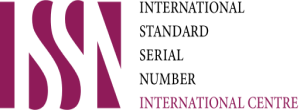Use of medicinal plants in the population between 35 and 45 years of age in the Miraflor Community of Esteli, 2024
DOI:
https://doi.org/10.62407/dzv5f378Keywords:
medicinal plants, natural medicine, traditional medicine, medicinal flora, therapeutic resourcesAbstract
The study evaluated the knowledge and use of medicinal plants among individuals aged 35 to 45 in the Estelí neighborhood, Nicaragua, using a quantitative approach with a non-experimental, descriptive design. A simple random sample of 162 residents was drawn from a total population of 275. Results indicated that 76% of respondents use medicinal plants, while 24% prefer conventional medicine. Additionally, 40% reported taking medication without a medical prescription. The use of medicinal plants was more prevalent in rural areas (80%) and among women (75%). Sixty percent of the population believes that medicinal plants are as effective as conventional drugs. The discussion highlights the coexistence of traditional and modern medicine in Nicaragua and the need to strengthen education on the safe use of medicinal plants to prevent risks such as self-medication. The study concludes that regulating their use and promoting research to support their efficacy and safety is essential, contributing to safer and more accessible healthcare.
Downloads
References
Ayçaguer, L. C. S., Ochoa, F. R., Soberats, F. J. S., & Galbán, P. A. (2014). Medicina Convencional y Medicina Natural y Tradicional: razones y sinrazones metodológicas. Revista Cubana de Salud Pública, 39(3). https://revsaludpublica.sld.cu/index.php/spu/article/view/12
Diaz, E.C., and M.L. Gradis. 2014. Especies frutales en las áreas urbana y rural del municipio de Chichigalpa, Chinandega. Available at: http://riul.unanleon.edu.ni:8080/jspui/bitstream/123456789/3081/1/225246.Pdf
Gazo Robles, J.M. 2017. Medicina popular y sus agentes tradicionales: sobadores, parteros y curanderos en zonas urbanas. Raíces: Revista Nicaragüense de Antropología 1: 49–63. Available at: http://www.revistasnicaragua.net.ni/index.php/Raices/article/view/3038.
Hernández Sampieri, R., Fernández Collado, C., & Baptista Lucio, P. (2010). Metodología de la investigación. (5ª. Ed.). McGrawHill. https://www.academia.edu/20792455/
Hernández Sampieri, R., Fernández Collado, C., y Baptista Lucio, P. (2014). Metodología de la investigación. (6a. ed.). McGraw-Hill
Hernández Sampieri, R., Fernández-Collado, C., y Baptista Lucio, P. (2006). Metodología de la investigación. (4ta. ed.). México Trillas. http://www.univo.edu.sv:8081/tesis/020090/020090_Cap1.pd
Jain, N. N., Ohal, C. C., Shroff, S. K., Bhutada, R. H., Somani, R. S., Kasture, V. S., & Kasture, S. B. (2003). Clitoria ternatea and the CNS. Pharmacology, Biochemistry, and Behavior, 75(3), 529–536. https://doi.org/10.1016/s0091-3057(03)00130-8
Machín, M., Oyarzun, M., Cárdenas, M., Rodríguez, F., Faz, E., Rivas, M., Orozco, O., & Mosquera, D. (2011). Estudio etnobotánico de las plantas más utilizadas como diuréticas en la Provincia de Villa Clara, Cuba. Boletín Latinoamericano y del Caribe de Plantas Medicinales y Aromáticas, 10(1), 46–5.https://www.redalyc.org/articulo.oa?id=85618182006
Mayorga Sánchez, V., Gutiérrez Cáceres, M., & Rueda Pereira, R. (2007). Plantas medicinales utilizadas por la población de la ciudad de León. Universitas, 1(1), 24-26. https://C:/Users/Resp.%20Planificacion/Downloads/4.%20(3).pdf
Mukherjee, P. K., Rai, S., Kumar, V., Mukherjee, K., Hylands, P., & Hider, R. (2007). Plants of Indian origin in drug discovery. Expert Opinion on Drug Discovery, 2(5), 633–657. https://doi.org/10.1517/17460441.2.5.633
Muñoz López De Bustamante, F. (2002). Plantas Medicinales y Aromáticas. Estudio, cultivo y procesado. 4ª ed. Ed. Mundi-Prensa, 365 pp.
Pamplona Roger, J. D. (1995). Enciclopedia de las plantas medicinales. https://dialnet.unirioja.es/servlet/libro?Codigo=16276
Pazos, C. P., Plain, A. P. de A., & Viera, Y. R. (2019). La Medicina Natural y Tradicional como tratamiento alternativo de múltiples enfermedades. Revista Cubana de Medicina General Integral, 35(2), 1–18. https://www.medigraphic.com/cgi-bin/new/resumen.cgi?IDARTICULO=94434
Pereyra-Elías, R., & Fuentes Delgado, D. (2012). Medicina Tradicional versus Medicina Científica ¿En verdad somos tan diferentes en lo esencial? Acta Médica Peruana, 29(2), 62–63. http://www.scielo.org.pe/scielo.php?script=sci_abstract&pid=S1728-59172012000200002&lng=es&nrm=iso&tlng=es
Piura López, J. (2006). Metodología de la investigación científica: un enfoque integrador(1.a ed.). PAVSA.
Rivas Suazo, N. E. (2018). Composición florística de las plantas medicinales del Centro de Transferencia Agroforestal (CeTAF), Comunidad Indígena de Tiktik Kaanu, en el periodo de julio 2015 a febrero 2016. Bluefields, RACCS [Bachelor, Bluefields Indian & Caribbean University]. http://repositorio.bicu.edu.ni/1183/
Robles Guido, J. M. (2020). Uso tradicional de medicamentos herbarios en la comunidad Benjamín Zeledón, Ticuantepe, 2019-2020 [Tesis, Universidad Nacional Autónoma de Nicaragua, Managua]. http://repositorio.unan.edu.ni/id/eprint/16123/
Velásquez Pichardo, G. X., & Rivas Peralta, E. C. (2016). Plantas Medicinales como una alternativa de preservación a la salud [Other, Universidad Nacional Autónoma de Nicaragua, Managua]. http://repositorio.unan.edu.ni/id/eprint/3868/
Downloads
Published
Issue
Section
License
Copyright (c) 2025 Georvany José Salgado Aráuz

This work is licensed under a Creative Commons Attribution 4.0 International License.
CC BY 4.0 Attribution 4.0 International
https://creativecommons.org/licenses/by/4.0/









